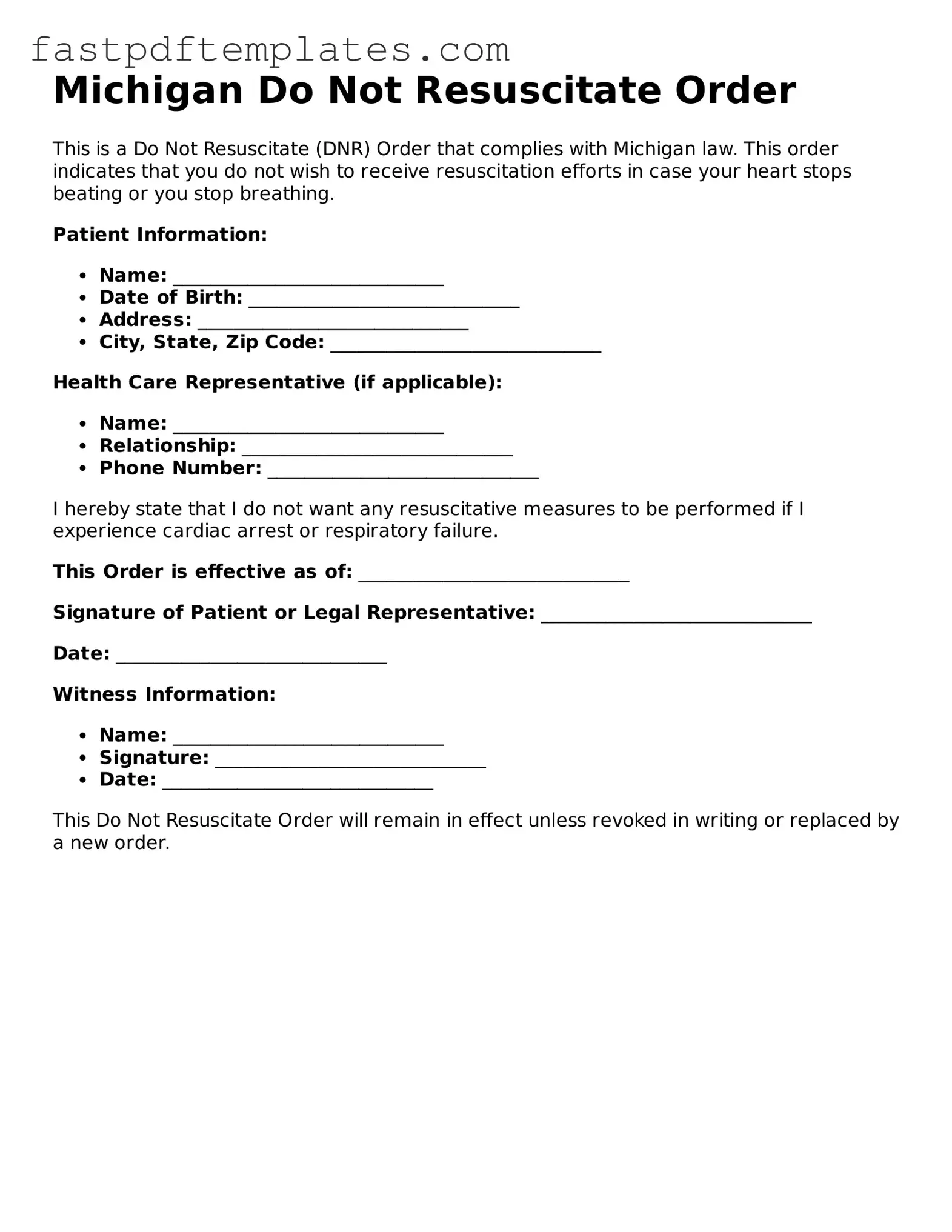Michigan Do Not Resuscitate Order
This is a Do Not Resuscitate (DNR) Order that complies with Michigan law. This order indicates that you do not wish to receive resuscitation efforts in case your heart stops beating or you stop breathing.
Patient Information:
- Name: _____________________________
- Date of Birth: _____________________________
- Address: _____________________________
- City, State, Zip Code: _____________________________
Health Care Representative (if applicable):
- Name: _____________________________
- Relationship: _____________________________
- Phone Number: _____________________________
I hereby state that I do not want any resuscitative measures to be performed if I experience cardiac arrest or respiratory failure.
This Order is effective as of: _____________________________
Signature of Patient or Legal Representative: _____________________________
Date: _____________________________
Witness Information:
- Name: _____________________________
- Signature: _____________________________
- Date: _____________________________
This Do Not Resuscitate Order will remain in effect unless revoked in writing or replaced by a new order.
